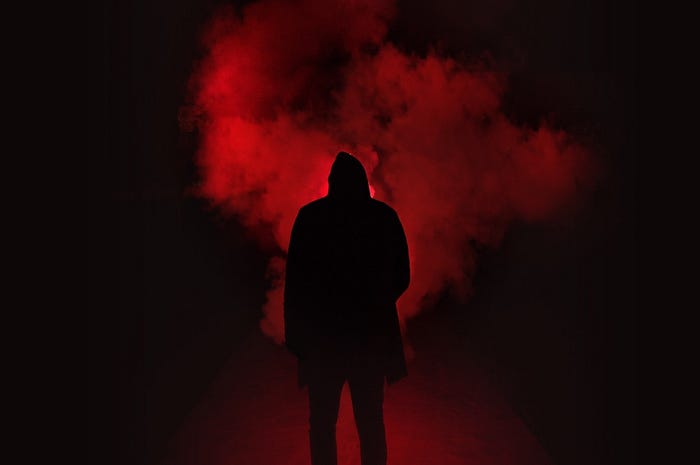The Colour of Trading

We may not even realise it, but when we are looking at certain colours our brain turns these into feelings.
With trading, we know that our emotions and state of mind have a big impact on our trading performance and how we react to situations in the market.
With this in mind, my team and I thought this would be an interesting thing to look into further, as part of the search for more marginal gains in trading performance.
When I'm checking people's chart screenshots to give them feedback on their analysis, I get to see all kinds of colour combinations, but typically they will feature a black or white background with red and green candles.
The traditional colour scheme of green and red candles is commonly accepted. Green is for upwards movements and red is for downwards movements. But what if we question the logic in this?
It is a known fact that colours affect our mood and can change our perception of things, but a lot of the factors come down to personal preference and personalities. We also subconsciously link colours to memories of experiences we’ve had, which can also bring up a lot of emotions.
Therefore, this would suggest that rather than going for commonly accepted colour schemes, we should be looking for something that works best for us individually.
And what if we don't just leave it at our charts? What about the colour of the clothes we wear while we're trading? What about the colours we surround ourselves with at our trading workspace?
As with many aspects of our mind, research can be very hit and miss since it's so hard to measure people's emotions and reactions. To a certain extent, large parts of our minds are still a mystery.
This, of course, leads to some disagreement amongst scientists. In this specific area, some believe that there is not enough proof to connect specific colours to emotions.
However, with that being said, there are still some universal psychological associations with each colour, so let's explore those.
Primary Colours

We have three primary colours: yellow, blue and red. However, when it comes to our emotional link to colours, we have four psychological primary colours: red, green, yellow and blue.
These colours, along with black and white are known as opponent colours. This is based on something known as the ‘opponent process theory’.
This theory suggests that our visual system interprets information about colour by processing signals in an antagonistic manner.
These opponent channels are red vs. green, yellow vs. blue and white vs. black. These, therefore, make up the psychological primary colours, since any other colour can be described in terms of these pairs.
The reason they are opponent colours is that theoretically they can never be perceived together. For example, you can't get a greenish-red or a yellowish-blue.
So, leaving aside black and white, how do the four different psychological primary colours affect our mood?
Blue

Blue is supposed to be a tranquil and cool colour, making us feel calm and relaxed. In fact, it has even been found to slow down your heart rate and blood pressure, so it is even calming from a physical point of view.
This could be because blue makes us think of the sky or the sea. Some research has found that blues and greys can encourage more productivity. This has led some companies to use this as their office colour scheme.
However, blue can also be associated with feeling down, hence the saying ‘having the blues’ or 'Blue Monday'.
Perhaps stay away from blue if you're having a particularly bad month in the markets!
Yellow

Yellow is a colour that is often associated with happiness, cheerfulness or hope, but it is also associated with intelligence and an inquisitive mind.
These sound like the perfect characteristics for a person. Happy, positive and optimistic, but also intelligent and inquisitive.
However, although these are positive emotions, yellow can also evoke irritation and anger. This could be because of the amount of light in the colour, which causes the eyes to focus a bit harder, therefore causing more strain.
So, perhaps not the best colour to have as your chart background, but maybe a consideration for your trading room. Although, not if you have a baby around, as it has been found that babies cry more in a yellow room.
Red

The colour red is associated with an array of emotions. From love and warmth to anger and danger. It can also be perceived as showing power and dominance.
Two psychologists, Russell Hill and Robert Barton, from the University of Durham, started an investigation in 2004 to find out more about this colour and how it may invoke dominance.
They studied different types of combat sports in the 2004 Olympics, where opponents were given either blue or red outfits.
They found that when opponents were evenly matched, they were about 5% more likely to win when dressed in red.
However, colour doesn’t just affect the mind, it also affects the body.
Red can increase heart rate and blood pressure and can cause excitement, which also means too much red can cause anxiety.
Perhaps this compounds the emotions we feel when we see a sea of red in the markets.
However, these emotions are why red is used for danger signs, so keeping us on edge during those moments may be a good thing to a certain extent.
Green

Green is a colour that is often associated with nature. This could be one of the reasons that green brings out a lot of feelings of tranquillity and has a calming effect.
Some people also believe that the colour holds certain healing qualities. This is one of the theories behind why many people sit in a “green room” before going on a TV show, to settle their nerves and keep them calm.
As we know, in the markets we want to be emotionally neutral as much as possible. So being calm and tranquil is an ideal condition to be in.
Colours of the Spectrum

Of course, what we've discussed so far are just the primary colours. All other colours and variations also have their own emotions linked to them.
There are positives and negatives about all the colours and this comes down to personal preference.
The colour spectrum is split into two halves, with the warm red type tones and the cool blue type tones.
The warm tones, which include colours like yellow, orange and red, can build excitement, warmth and happiness. On the other end of the scale, these same tones can build anger and frustration.
The colours on the cool side such as green and blue can produce feelings like calmness and tranquillity, yet on the other end can produce feelings like sadness.
The difference in these feelings can also come down to the tone or strength of the colour.
For example, a pale blue or green can be relaxing because of the association with the sky and trees, but a dark blue and dark green could produce feelings of sadness and loneliness.
Many companies use colour psychology in their marketing strategies. They aim to evoke certain moods or traits in people and subtly manipulate certain perceptions of a product or service.
A study by Stanford professor Jennifer Aaker called “Dimensions of Brand Personality” has shown the different ways that colours show a brand’s personality when marketing. For example, blue could mean sincerity, pink can mean excitement and purple can show sophistication.
Interestingly, this also goes for different types of lighting to bring out certain moods and emotions.
In a casino, a lot of the time gambling will take place under reddish lights, rather than blue. This is because the red tones increase levels of excitement, which is shown to make people gamble more and be more willing to bet larger sums of money. Something we want to avoid in trading!
On the other hand, blue lights are used in a number of areas to bring down street crime. One of the cities that implemented this is Glasgow, where they found that after the blue lighting was installed the amount of street crime reduced significantly due to the calming effect.
A marginal gain of just 1% in one aspect of our trading can lead to a real improvement in profit for us over time and the more marginal gains we find, the more significant the improvements will be.
Changing the colours you see on the charts or the colours you use in your surroundings may seem trivial, but if it contributes just 1%, it will be completely worth it.
